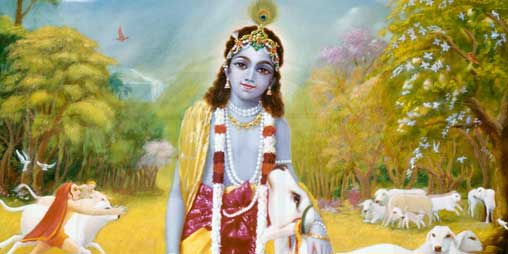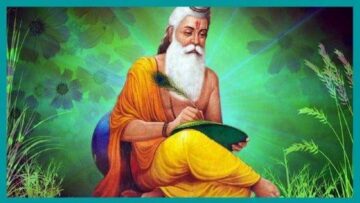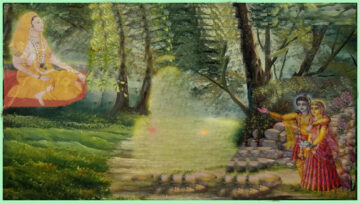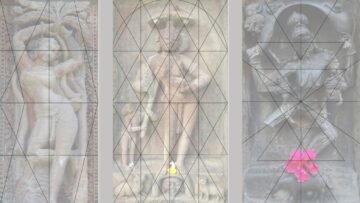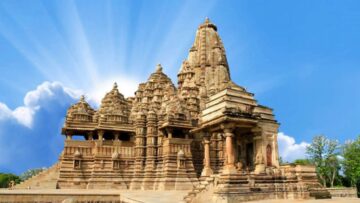Northern India has undergone a lot of political changes in the course of history. The historical records clearly show the massive number of attacks made by the Islamic world in the northern part of the country. After the defeat of Prithviraj Chauhan in the Battle of Tarain, the northern gateway of India was left open for the Islamic world to invade.
In this course of invasion all the major cities of North India, with great cultural and economic importance, were plundered by the foreign invaders. Mathura being the important centre of economy and culture, was also devastated multiple times. Past records clearly show the devastation carried out by the invaders at regular intervals, which left the city in distress.
Mathura since the ancient times, remained an important centre of pilgrimage, for devotees travelling from all across the country. The city is also identified as the one of the seven oldest cities of pilgrimage, along with Kanchi, Haridwar, Ujjain, Varanasi, Dwarka, and Ayodhya.
Mathura is associated with Lord Krishna. According to sacred texts and scriptures, the dark-complexioned one was born here, and his childhood was spent in the nearby areas of Gokul, Vrindavan, Barsana, etc.
Lord Krishna is considered as one the ten avataras of Lord Vishnu, who is accorded as the preserver in the holy trinity. If examined closely one may find that the preserving attribute of Vishnu is present in all the incarnations.
According to sacred texts, Krishna grew up among the cow-herds in the rich landscape of Braj, full of flora and fauna. In this very landscape Krishna was born and spent his childhood and adolescence.
However, it was in the sixteenth century with the advent of Bhakti movement, that the sacred landscape of Braj became the central locus of Krishna Sect. Bhakti movement has been a catalyst in the development of the social, cultural, and political scenario of entire India, not just Braj.
In sixteenth century there was a massive change in the political scenario of North India. In 1515 CE when Chaitanya Mahaprabhu visited Braj for the pilgrimage, Lodhis were ruling the major part of Northern India with Delhi as their capital.
Mahaprabhu during his short tenure of pilgrimage, rediscovered many lilasthalis according to sacred texts; but a lot more was to be done in that course. Soon after completing his pilgrimage, Mahaprabhu returned back to Gaud Desha (present day Bengal), and ordered two of his foremost disciples Rupa and Sanatan Goswami to go to Braj, and rediscover the lost lilasthalis related to past times of divine couple- Radha and Krishna.
In the span of two to five years, many followers of Chaitanya Mahaprabhu came from Bengal, settled in Braj, and started assisting Rupa and Sanatan in the rediscovery and installation of the sacred sites. But the major contribution to this mammoth task was made by Shri Narayan Bhatta who visited Braj somewhat around 1545 CE.
Narayan Bhatta was born in Madurai in year 1531 CE in a Rigvediya Tailang Brahmin Family. In 1545 CE at the age of twelve years he came to Braj, and got initiated by Krishnadas Bramhachari Ji, a disciple of Shri Gadadhar Pandit Ji, who was one of the closest associates of Chaitanya Mahaprabhu himself.
He lived in Radhakund under the guidance of his spiritual master. The rediscovery or the re-establishment of the lost pilgrimage sites was being undertaken by numerous disciples and associates of Chaitanya Mahaprabhu. It was necessary to have a proper pilgrimage route with lilasthalis , for the pilgrims coming in large number from Bengal-Odisha, as well as from the other parts of the country; so that the spiritual essence of the Braj can be rekindled. The mechanism through which they achieved this new pilgrimage route was- Pilgrimage of Groves.
For the period of next eight years, Narayan Bhatt travelled extensively around the sacred groves, distributed through the eighty-four kos of Braj Mandal, rediscovering the lost lilasthalis under the guidance of his spiritual master. The basic ground work for his task was done by Six Goswamis, who came to Braj, much before him, and devoted their lives to this task of rediscovery.
It was year 1553 CE when the hard work done by Shri Narayan Bhatt was compiled in the written form by the name Vraj Bhakti Vilas on the banks of Radha Kund at Govardhan. Later he also wrote some important texts like Braj Pradipika, Brajotsav Chandrika, Braj Mahodadhi, Brajotsav Ahladani, Brihat Braj Gunotsav, and Braj Prakash which added to revival of spiritual identity of Krishna’s landscape.
The ritual of pilgrimage was codified in Vraj Bhakti Vilas by Narayan Bhatt. It became a major instrument for expanding the so called Krishna consciousness in a non-conventional way. The spiritual essence of cowherd boy was shifted from large patronised temples, which were under the constant threat of destruction, to groves, mountains, hillocks, trees, rivers, ponds etc. By this method, the abundant natural resources of Braj were effectively linked to the Lord, which added a unique value to each and every natural phenomena present there.
The new pilgrimage route was not focused around the urban centre of Braj, i.e. Mathura, but it was extended beyond the city into the surrounding natural resources. Important sites along the routes were marked by each temple related to Krishna and his associates. Narayan Bhatt elaborately prescribed rituals for each site, taking the references from the sacred texts.
To strengthen the historical and religious aspect of each and every site on pilgrimage route, he took references from text like Matsya Purana, Varaha Purana, Bhavishya Purana, Padma Purana, Vishnu Purana, Kurma Purana, Bramha Yamala Tantra, Rudra Yamala Tantra, Brahmaparashara, Vishnu Rahasya, Hastamalaka, Dhaumya Samhita, Parameshvara Samhita, Prahlada Samhita, Vashkala Samhita, Kaundiya Sahita, and many more.
By this method, people were able to state their right on the landscape, without directly confronting the imperial forces. The essence of Krishna was revoked historically and spiritually, along with the locally based narratives, to legitimize the vaishnava authority over Braj.
Narayan Bhatt choose to reconstruct the spiritual landscape incorporating the strong geographical features, rather than building temples as later could have been easily exposed to demolition by the invaders, existing and new.
He organised the sacred landscape of Braj into four heads:
Vana: Mahavan, Kamvan, Kokilavan, Talvan, Kumudvan, Bhandirvan, Chatravan, Khadirvan, Lohjanghvan, Bhadravan, Bahulavan and Belvan.
Upavan: Bramhavan, Apsaravan, Vihalvan, Kadambvan, Swarnavan, Surbhivan, Premvan, Mayurvan, Manegitvan, Sheshshayivan, Naradvan and Parmanandvan.
Prativan: Rankban, Vartavan, Karhavan, Kamvan, Anjanvan, Karnavan, Krishnakshipanvan, Nandaprekshankrishnavan, Indravan, Shikshavan, Chandravalivan and Lohvan.
Adhivan: Mathura, Radhakund, Nandgram, Gadh, Lalitagram, Vrishbhanupur, Gokul, Baldevan, Govardhan, Yavat, Vrindavan and Sanketvan.
Narayan Bhatt gave a new name to this Pilgrimage of Grove- Bana Yatra. Bana Yatra is traditionally scheduled for twenty-three days, spanning from Bhadrapada Krishna Ashtami to Bhadrapada Paurnima, i.e., eighth day of the dark half to the full-moon day of the month of Bhadrapada.
Later, the concept of Braj Yatra also came up, which is nothing but a suppliment of Bana Yatra. Bana Yatra focuses on pilgrimage through forests, whereas Braj Yatra focuses on pilgrimage of villages and small hamlets where lilas happened.
Narayan Bhatta also reinstated the tradition of folk theatre, which is called Raas Leela. He started this tradition from Unchagram at Barsana and it soon got spread all over Braj. Small kids were chosen to perform the lilas of Radha and Krishna, such as Sankhri Khor Lila, Matki Phod Lila, Holi Lila etc.
To enact these lilas he established many stages around Braj known as Raas Mandal. Some of the Raas Maandals founded by Narayan Bhatt are: – Radhakund, Shergadh, Unchagram, Mayurkuti, Gehvarvan, Yavat, Viharvan, Kokilavan, Kadambvan, Swarnavan, Premsarovar, Vrindavan, Karhela, Pisai, Parsoli, etc.
Along with the revival of pilgrimage route, he also discovered new lilasthalis according to the texts. Some of the Lilasthalis founded by him are Mansi Ganga, Kusum Sarovar, Govind Kund, Chandrasarovar, Kans Karagar, Rangbhoomi, Kans Vadh Sthal, Dhruv Teela, Narad Teela, Saptasamudrik Koop, etc.
He also located Pootna Khal, Balkridasthal, Bramhand Ghat, Ramanvan, Bhanukhor, Priyakund, Dangadh, Mangadh, Vilasgadh, Gahvarvan, Sankri Khor Dehkund, Triveni, Gyakund, Kashi Kund, Vimal Sarovar, Panchtirth, Dharm Kund, Adibadri, Sheshashayi, Nandghat, Cheer Ghat, Sanket, Viharvan, Charan Pahadi, Uddhav Van, and many more.
Moreover, wherever there was an absence of idols to worship a particular form of lord, he installed a deity at that place. Some of the deities instituted by him are Ladali-ji at Barsana, Baldev-ji at Unchagram, Gopinath-ji at Khayra, Sanketdevi and Radharaman-ji at Sanket, Sheshshayi Bhagwan at Sheshshayi, Dau-ji at Baldevji, Chaturbhuj-ji at Peth, Mahavidya, Dirgha Vishnu, Maha Vishnu, and Adivarah at Mathura etc.
The sacred landscape envisioned by Narayan Bhatt invoked a new spiritual idea, which stood by the most suppressive time, of the political history of India. The new pilgrimage of groves was strongly knitted around the references from sacred texts, as well as local folklore related to past times of divine.
It was Narayan Bhatt who utilized the very traditional idea of pilgrimage, in a novel way, to sustain the hardest time. He ensured that religious traditions continued undetected and unsuspected by the ruling Muslims. His idea of pilgrimage of groves made no substantial changes in the landscape, which in a way invoked the idea of nature conservation. This idea of conservation of trees, hillocks, ponds, rivers, reservoirs etc. was secretly hidden in this pilgrimage of groves.
The sixteenth century circumstances transformed the vaishnava ideas, which further connected the rituals and faith, with the natural landscape. Lastly one can easily see that this new idea of pilgrimage placed Braj in an important place. In sixteenth century, Braj was not an important political entity; but it played an important role in redefining and revoking the vaishnava culture, which was critical for sustenance during that time.
(The paper was presented at the Yatra Conference jointly organized by Indic Academy and Bharat Adhyayan Kendra, BHU, at BHU, Varanasi during 15th-17th November, 2019.)
Disclaimer: The opinions expressed in this article belong to the author. Indic Today is neither responsible nor liable for the accuracy, completeness, suitability, or validity of any information in the article.

